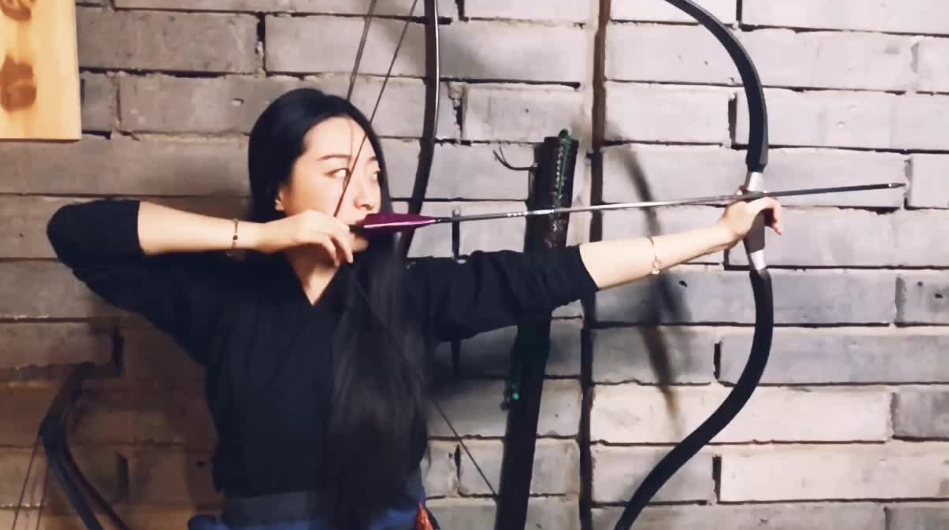Release time:2025-03-14 14:24:01Clicks:author:SPG ArcheryMain categories:Bows, Arrows, Archery Accessories

The bow has a history of more than 20,000 years, which is longer than the history of the four ancient civilizations. It has accompanied human evolution step by step, from hunting to war, to today's sports competition. It has witnessed the growth of mankind and the origin of civilization, and it has also evolved with human wisdom. When many people were young, they may have used bamboo or elastic materials, tied ropes at both ends, and played as bows. Although the power is generally very small, this is the earliest bow, and it is still used today.
In recent years, archery has quietly emerged, slowly entering the public eye from a niche sport. Many people are interested in archery, but how to get started? Today, let's start with the types of bows.
Bows have a variety of classification standards, and there are also crossovers between them. Traditional bows, recurve bows, American hunting bows, compound bows... are all bows, what is the difference?
Traditional bows
The traditional bow is an ancient invention. There is a tradition of making bows and arrows in ancient my country. It is said that bows and arrows were invented in my country during the reign of Emperor Xuanyuan. The manufacturing technology of traditional bows in my country is very advanced, and it plays a very important role in ancient military wars in my country.
Kyudo originated in China. The "shooting" in the ancient Chinese six arts of "ritual, music, shooting, charioteering, calligraphy, and mathematics" refers to archery. In ancient times, after China's "Book of Rites" was introduced to Japan, Japanese archery not only developed to a certain extent, but also formed today's kyudo on this basis. Kyudo strengthens the body while seeking to achieve spiritual cultivation. Kyudo is not a simple bow and arrow shooting, but pays special attention to the training of etiquette and manners.
The traditional bow structure is the simplest, and the main structure is only the bow body and bowstring. The bow body has no arrow stand, and the bow hand is used to put the arrow, and the thumb is released. The equipment of the traditional bow is the simplest, but it is the most difficult to use.
Recurve bow
The difference between recurve bows and compound bows:
1. The tension changes of recurve bows and compound bows are different. The initial tension of recurve bows with the same tension standard is small, and the tension increases as the bow draws longer. Due to the effect of the direction of the eccentric wheel group, the initial force of the compound bow is large, and the symmetrical force decreases as the bow is continuously pulled. 2. The draw distance of the recurve bow and the compound bow is different. The draw distance of the recurve bow can be changed arbitrarily within the deformation limit of its material. The longer the draw distance, the farther the arrow will go. The compound bow has a structural device for positioning the draw distance, and the draw distance is fixed. 3. The control force of the recurve bow and the compound bow is different. As the draw distance of the recurve bow increases, the difficulty of effective and consistent control will increase. The characteristic of the compound bow after the bow is drawn is that the control force decreases, and effective and consistent control is easier. 4. The arrow rest of the recurve bow and the compound bow are different. The arrow rest of the recurve bow adopts the side-mounted type, and the arrow rest of the compound bow adopts the center penetration, tower and drop type. The recurve bow is the Olympic competition bow type. The recurve bow is relatively fixed, with the front hand pushing the bow, the forearm cantilevering, and the back hand leaning on the nose tip, mouth corner and jaw line.
American hunting bow
In addition to the bow shape, the biggest difference between the American hunting bow and the traditional bow is that there is an arrow rest, so that the arrow can be placed on the arrow rest. Compared with the traditional bow placed on the hand, it reduces the unstable factors and makes it easier to use. American hunting bows and traditional bows do not have sights, aiming with arrows or intuitive aiming.
Compound bows
Compound bows are divided into competitive compound bows and hunting bows. The two bows have obvious differences in axle distance and size. The design of competitive compound bows is for competition accuracy, which can sacrifice vibration, weight, axle distance size, arrow speed and other indicators. The core of everything is to improve consistency and accuracy.
The bow handle push bow point of hunting type compound bows is generally set after the lateral vertical line connection point of the upper and lower bow pieces (also known as the rear bow handle); the bow pieces are generally formed by fiberglass resin pultrusion, the bow pieces are short, the bending change is small, and the deformation is concentrated in the lower part of the bow piece; the wheel axle distance is generally less than 36 inches; the bow gear is small; the center of the camshaft hole of the eccentric wheel group is generally more than half; the draw distance positioning device is far from the pull force recovery point. The outstanding features of hunting bows are fast arrow speed and a large control range of bow opening force reduction.
Bows and arrows have accompanied mankind all the way, whether in war or competition, and they also reflect the development of human science and technology. They are witnesses of human history and civilization. Different countries have formed their own unique bow and arrow culture, which is an indispensable part of history and culture.